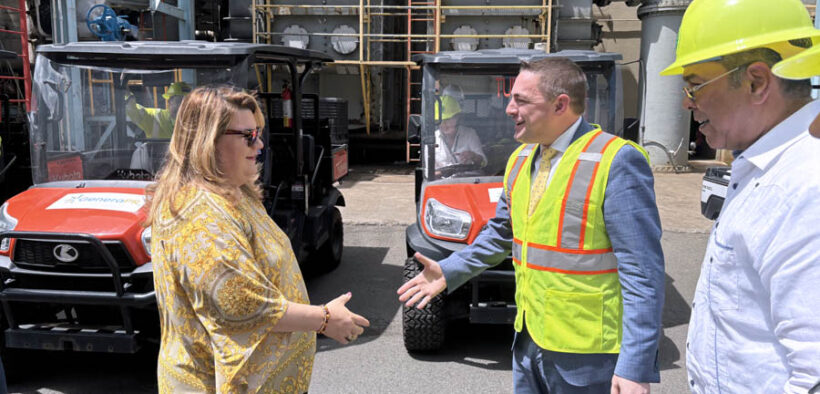EPA official outlines infrastructure, energy goals in 1st Puerto Rico visit

Administrator Michael Martucci says the agency will support key infrastructure projects and maintain a permanent presence on the island.
U.S. Environmental Protection Agency (EPA) Region 2 Administrator Michael Martucci was wrapping up his first multi-day visit to Puerto Rico Wednesday, outlining the agency’s commitment to helping the island address urgent infrastructure and environmental challenges — especially those related to energy reliability, water quality and solid-waste management.
Martucci, who oversees EPA operations in New York, New Jersey and the Caribbean, began his trip with a site visit to the Puerto Rico Electric Power Authority (PREPA) facility in Cataño, joined by Gov. Jenniffer González and representatives from LUMA Energy and GeneraPR.
The visit focused on the fragility of the island’s electric grid and the need for “immediate, midterm, and long-term solutions” to stabilize power generation, he said during an exclusive interview with News is my Business.
“There’s a very short time frame to deliver all of these things that we’re talking about,” Martucci said, noting that the EPA is reviewing its authority under the Clean Air Act to help reduce load-shedding events during peak demand periods. “We can’t have agency delays be the reason that an already fragile system has even more reliability issues.”
The EPA is also involved in reviewing and permitting temporary power barges and other emergency infrastructure solutions aimed at easing pressure on the grid in the short term.
Beyond energy, Martucci’s visit included discussions with the governor about water and solid-waste priorities. He emphasized the importance of maximizing the agency’s revolving fund for drinking water and wastewater infrastructure, as well as grant funding to support waste management reforms.
“From my perspective, this is about getting the stakeholders at the table, identifying top-priority projects, and all working in concert to deliver money and make them happen as quickly as possible,” he said.
Martucci also addressed concerns about potential staffing cuts following federal efficiency reviews, reaffirming the EPA’s long-term presence in Puerto Rico.
“Our presence here is permanent,” he said. “We’re running programs in the most effective way possible, and removing EPA from the island would actually increase costs and reduce the quality of service.”
The agency’s local office currently includes about 65 employees from several divisions, including the Caribbean Division, Criminal Investigations and Regional Counsel. These teams lead inspections, permitting, superfund site remediation and technical assistance.
Martucci, a former New York state senator and small business owner, also highlighted the intersection between environmental policy and economic development. He pointed to the EPA’s Brownfields Program, which supports the redevelopment of contaminated sites.
“I’m very interested in ways that this agency intersects with economic development,” he said, announcing plans to return in May for the EPA’s annual Brownfields Conference. “This agency can play a key role in being an economic driver while protecting the environment and human health.”
Martucci said his visit laid the groundwork for stronger collaboration between the EPA and Puerto Rico’s new administration.
“We have two new administrations that had a great opportunity to spend a lot of time together and become completely aligned on priorities,” he said. “We look forward to working strongly together to deliver real results for the people who live here.”
He is scheduled to return to the island May 13–15 for the agency’s Brownfields Week event.




